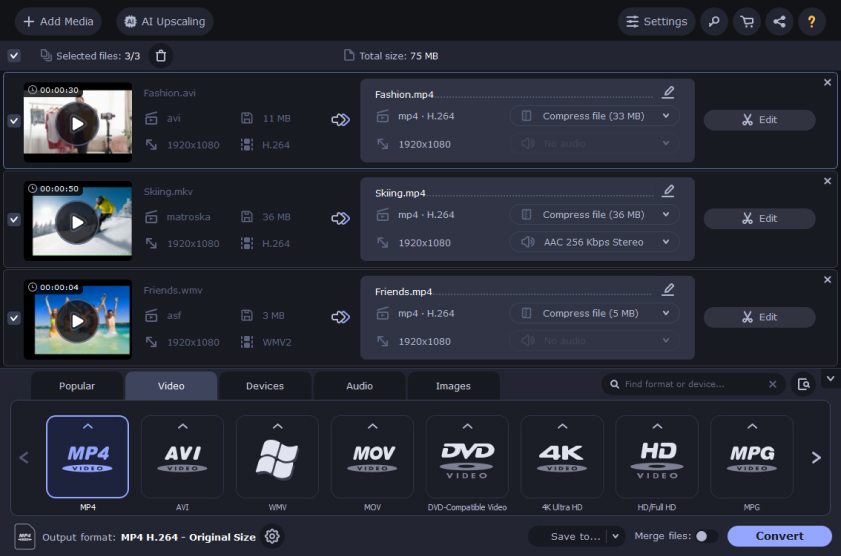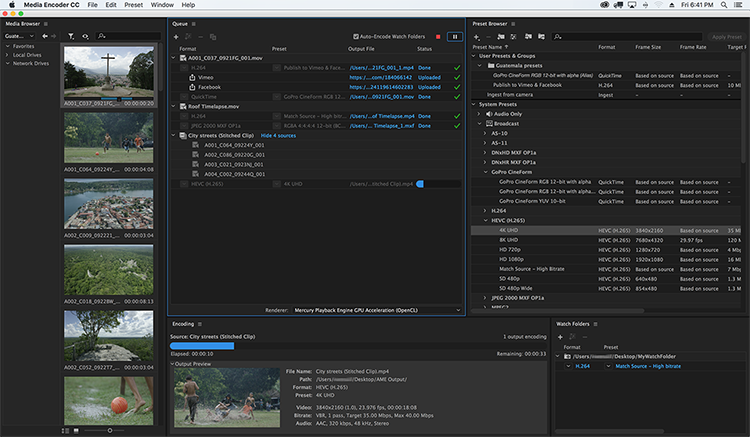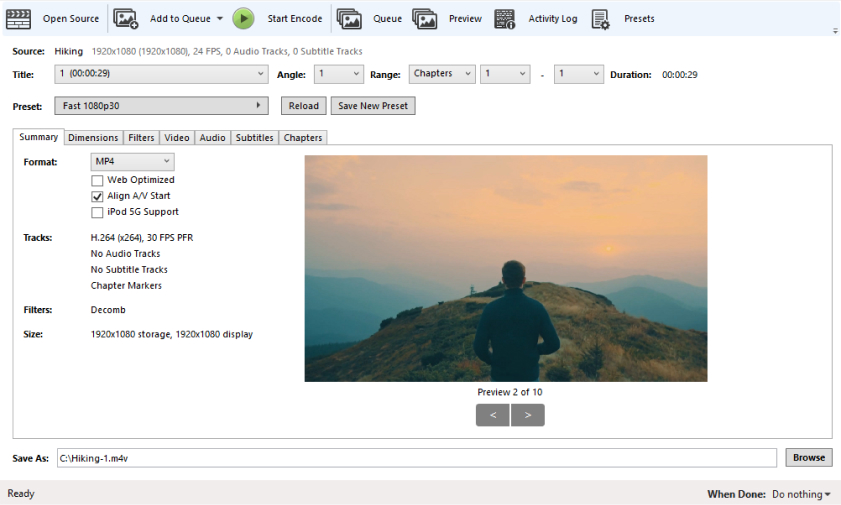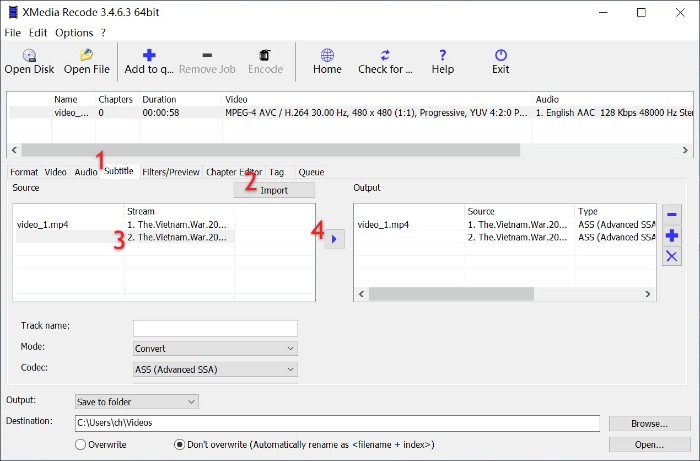Exploring the Top 5 Video Encoding Software
Are you tired of dealing with bulky video files that take forever to upload and share? Is your video quality suffering due to inefficient encoding? Search no more. In this little adventure, we’re taking a deep dive into the wacky world of video encoding software. Whether you’re a cinematic genius or just a couch potato content creator, stumbling upon the ideal video encoder could make a splash big enough to make Poseidon jealous! So, let’s commence this expedition jointly as we delve into the top 5 video encoding software choices. By the conclusion of this article, you’ll possess the wisdom to select the optimal one to suit your requirements.
Unveiling the Power of Video Encoding
Alrighty, folks, before we dive headfirst into the dazzling universe of video encoding software, let’s hit the brakes for a sec and demystify the enigma that is video encoding. Picture this: video encoding is like squeezing your favorite oversized T-shirt into a tiny matchbox, but in a digital realm. It’s the magical transformation that turns your video files into the chameleons of the digital world, making them chameleon-ier than ever! They can blend into any crowd, whether it’s the online streaming squad, the video sharing gang, or even the dusty corners of archival storage. It’s the magic behind reducing file sizes without sacrificing quality – an essential tool in today’s digital landscape.
The Quest for the Ideal Video Encoder
In a world filled with more video encoding software choices than a buffet has desserts, how on Earth can you possibly choose the one that’s the perfect match for you? Well, hang on to your pixels, because we’re about to embark on an epic journey to unveil the Holy Grail of video encoders! Armed with our trusty decoder ring, we’ll navigate the perilous seas of video encoding software and ensure you come out on the other side with your video quality intact and your sense of humor fully encoded!
1. Know Your Needs
Before you dive headfirst into this grand adventure, take a moment to ponder: What in the world do I demand from my video encoder? Are you on a wild race for encoding so speedy it could make the Flash jealous during a live stream? Or perhaps you’re after quality so exquisite that even your cat’s home videos will be worthy of the Louvre? Understanding your desires is the opening act in selecting the perfect gadget for the task.
2. Compatibility is Key
Your video encoder should play nice with your existing setup. Is it compatible with your operating system? Does it support the video formats you commonly work with? Ensure that the software you choose won’t leave you stranded on a deserted island of incompatibility.
3. Speed vs. Quality
It’s the eternal struggle in the world of video encoding – speed versus quality. Do you need your videos encoded at lightning speed, or are you willing to sacrifice some time for pristine quality? Strike a balance that suits your project’s requirements.
4. User-Friendly Interface
Nobody wants to decode hieroglyphics when navigating a video encoder. Look for software that boasts a user-friendly interface, making your encoding experience as smooth as butter.
5. Budget Considerations
Money talks, and it’s essential to find a video encoder that fits your budget. Fortunately, there are options for both frugal content creators and big-budget studios.
Now that we’ve armed you with the knowledge to choose wisely, let’s dive into the top 5 video encoding software options that could change the way you work with video forever.
The Top 5 Video Encoding Software
1. Movavi Video Converter

In the vast landscape of multimedia software, where video formats, resolutions, and devices vary like constellations in the night sky, finding a versatile tool to navigate this celestial maze can be challenging. Enter Movavi Video Converter, the Swiss Army knife of video transformation. In this article, we’ll take you on a journey through the cosmos of video conversion, exploring why Movavi Video Converter is a star among multimedia tools.
- Wide Format Support: Movavi Video Converter supports an extensive range of video formats, including MP4, AVI, MKV, MOV, and more. No matter what format your videos are in, Movavi can handle it with ease.
- Device-Specific Presets: Gone are the days of manual settings adjustments. Movavi offers a vast collection of device-specific presets, ensuring that your videos are optimized for playback on smartphones, tablets, gaming consoles, and other devices.
- High-Quality Conversion: Quality matters, and Movavi knows it. You can count on this software to maintain the original quality of your videos during conversion. Say goodbye to pixelation and loss of detail.
- Ultra-Fast Conversion: Time is precious, and Movavi understands that. With its SuperSpeed mode, you can convert videos at blazing speeds without compromising on quality. Perfect for when you’re in a hurry.
- Batch Conversion: Got a whole folder of videos that need conversion? No problem. Movavi allows you to convert multiple files simultaneously, saving you time and effort.
- Editing Tools: Movavi isn’t just a converter; it’s a mini video editing suite. You can trim, cut, and merge videos, add captions and watermarks, adjust audio, and even apply special effects.
- Extract Audio: Want just the audio from a video file? Movavi can do that too. You can extract audio tracks and save them in various formats like MP3, AAC, FLAC, and more.
- Subtitle Support: If you’re dealing with foreign-language videos, Movavi lets you add and customize subtitles to make your content more accessible to a global audience.
- Image and Snapshot Capture: Sometimes, you stumble upon a perfect frame in your video. With Movavi, you can capture screenshots and save them as images or snapshots.
2. FFmpeg

If you’re a tech-savvy video enthusiast, you’ve probably heard of FFmpeg. It’s a command-line tool with unmatched encoding capabilities. Here’s why it’s a contender:
- Open-Source: FFmpeg is an open-source project, which means it is freely available for anyone to use, modify, and distribute. This open nature has contributed to its widespread adoption and continuous development by a global community of contributors.
- Cross-Platform: FFmpeg is designed to run on multiple operating systems, including Windows, macOS, Linux, and more. This cross-platform compatibility makes it accessible to a wide range of users.
- Multimedia Swiss Army Knife: FFmpeg is renowned for its versatility and capability to handle various multimedia tasks. It can process not only video but also audio and even image files, making it a comprehensive multimedia tool.
- Wide Range of Codecs: FFmpeg supports an extensive list of audio and video codecs, making it suitable for encoding, decoding, and transcoding media in different formats. This support includes both common and less-known codecs.
- Filters and Effects: Users can apply a wide array of filters and effects to multimedia content using FFmpeg. This feature allows for tasks like resizing, cropping, adding watermarks, and applying color corrections to videos.
- Scripting and Automation: FFmpeg can be used programmatically and through scripts, enabling users to automate various multimedia processing tasks. This makes it a valuable tool for developers and power users.
- Live Streaming: FFmpeg supports live streaming protocols, making it a preferred choice for content creators and broadcasters looking to stream video and audio content over the internet.
- GPU Acceleration: To enhance encoding and decoding performance, FFmpeg can leverage the power of your computer’s Graphics Processing Unit (GPU), resulting in faster processing times for certain tasks.
- Continual Development: FFmpeg is an actively maintained project, with updates and improvements released regularly. This ensures that it stays up-to-date with the latest multimedia technologies and standards.
Did you know that FFmpeg can decode and encode nearly every known audio and video codec?
3. Adobe Media Encoder

Adobe is a name synonymous with creative software, and their Media Encoder is no exception. If you’re a part of the Adobe Creative Cloud ecosystem, this might be your best bet:
- Seamless Integration: Adobe Media Encoder seamlessly integrates with other Adobe Creative Cloud applications, such as Adobe Premiere Pro and Adobe After Effects. This integration allows for a smooth and streamlined workflow, as users can directly export their projects from these applications to Media Encoder.
- Wide Format Support: It supports a vast array of video and audio formats, making it versatile for various production needs. Whether you’re working with high-definition footage or specialized formats, Media Encoder can handle it.
- Batch Processing: Media Encoder makes it easy to encode multiple media files at once. You can set up batch encoding jobs to save time and automate repetitive tasks, ensuring efficient media processing.
- Presets: Adobe Media Encoder offers a comprehensive library of encoding presets. These presets are optimized for different platforms, devices, and output requirements, simplifying the encoding process. Users can also create and save custom presets for their specific needs.
- GPU Acceleration: To expedite the encoding process, Media Encoder takes advantage of the computer’s GPU (Graphics Processing Unit) capabilities. This results in faster rendering and export times, especially when working with high-resolution or complex projects.
- Quality and Bitrate Control: Users have precise control over the quality and bitrate of their encoded videos. This allows for fine-tuning to achieve the desired balance between file size and video quality.
- Time Tuner: Media Encoder features a Time Tuner option, which enables users to adjust the duration of media content without affecting the quality. This can be useful for adapting content to different time slots or social media platforms.
- Watch Folders: With watch folders, you can set up directories that automatically monitor for new media files. When new files are added to these folders, Media Encoder can automatically initiate encoding jobs based on preset configurations.
- Dolby Vision and HDR Support: Media Encoder provides support for high dynamic range (HDR) and Dolby Vision technologies, allowing creators to deliver stunning video content with enhanced color and contrast.
If you’re already a fan of Adobe’s suite of creative tools, this encoder will feel like a natural extension of your workflow.
4. HandBrake

Wait, didn’t we already talk about HandBrake? Well, yes, we did, but it’s worth reiterating because it’s that good. In the world of video encoding software, HandBrake is like the charming protagonist that keeps winning hearts.
- Cross-Platform Compatibility: HandBrake is available for Windows, macOS, and Linux, making it accessible to users across different operating systems.
- Wide Range of Input Formats: It supports a variety of input formats, including common ones like MP4, MKV, AVI, and more. This means you can work with videos from various sources seamlessly.
- Quality Control: HandBrake offers extensive options for controlling video quality. Users can adjust settings for video codecs, bitrates, frame rates, and more to achieve the desired balance between video quality and file size.
- User-Friendly Interface: HandBrake’s interface is intuitive and user-friendly, making it accessible to both beginners and experienced users. You don’t need to be a video encoding expert to get started.
- Presets for Quick Encoding: While HandBrake allows for detailed customization, it also provides a range of presets for quick and easy encoding. These presets are optimized for specific devices and platforms, simplifying the process for users who want a quick solution.
- Batch Processing: HandBrake supports batch processing, allowing you to queue multiple videos for encoding in one go. This feature is a time-saver when you have a large number of videos to process.
- Subtitle and Audio Track Selection: You can easily choose which audio tracks and subtitles to include in your encoded video. This is especially handy when working with multilingual content.
- Preview Window: HandBrake provides a preview window that allows you to view your video before final encoding. This helps ensure that your settings produce the desired output.
- Video Filters: The software offers various video filters, such as deinterlacing, denoising, and scaling. These filters can enhance video quality and correct issues in source footage.
HandBrake is a classic that never gets old. It’s like that timeless movie you can watch over and over again.
5. XMedia Recode

XMedia Recode might not be as well-known as some of the other contenders on this list, but it’s a hidden gem worth exploring:
- Intuitive User Interface: XMedia Recode boasts a user-friendly and straightforward interface, making it accessible to both beginners and experienced users. Navigating through its various options and settings is a breeze.
- Format Compatibility: One of XMedia Recode’s strong suits is its extensive format support. It can handle a wide range of input and output formats, including popular ones like MP4, MKV, AVI, and more. This flexibility ensures you can work with virtually any video file.
- Batch Processing: Efficiency is key when dealing with multiple videos. XMedia Recode allows you to queue up multiple files for batch processing. This feature is particularly handy for encoding an entire video library in one go.
- Video Editing Tools: While not a full-fledged video editor, XMedia Recode offers basic editing tools. You can trim, crop, and adjust the size of your videos before encoding them. This is a useful feature for those looking to make quick edits without using a separate video editing software.
- Quality Control: XMedia Recode provides control over various encoding parameters, such as bitrate, resolution, and codec settings. This level of control ensures you can tailor the output quality to meet your specific requirements, whether you prioritize file size or video quality.
- Preview Function: Before committing to the final encoded video, XMedia Recode allows you to preview the results. This ensures that your encoded video meets your standards and saves you from any unpleasant surprises.
- Subtitle Support: XMedia Recode enables you to include subtitles in your videos. You can import external subtitle files and choose from various subtitle settings, including font style, size, and positioning.
- Audio Conversion: In addition to video encoding, XMedia Recode can handle audio conversion tasks. You can extract audio from video files or convert audio files from one format to another.
- Presets: XMedia Recode offers a variety of presets for different devices and platforms. This feature simplifies the encoding process, allowing you to choose a preset that matches your target output, such as smartphones, tablets, or gaming consoles.
XMedia Recode was originally designed as an all-in-one video converter and audio extractor, making it versatile for a range of tasks.
Conclusion: Choose Wisely, Encode Proudly
In the realm of video encoding software, the right choice can make your video content shine. Whether you opt for the user-friendliness of HandBrake, the power of FFmpeg, the Adobe integration of Adobe Media Encoder, or the simplicity of XMedia Recode, remember to assess your needs, compatibility, speed, and budget to make an informed decision.
Now, armed with the knowledge of these top 5 video encoding software options, you’re ready to embark on your video encoding adventures. So, choose wisely, encode proudly, and may your videos always play smoothly!

Since 2019, Sabrina has been sharing her expertise as the author of three online courses, making photography and videography accessible to all, regardless of age or talent. Her blog, moonlight3d, serves as a hub for connecting with her audience, offering valuable tips on software, videography, and personal experiences. Feel free to reach out to Sabrina for insights and guidance on your creative journey through photography and videography.
